John Ruskin - Lectures on Architecture and Painting, Delivered at Edinburgh in November 1853
Здесь есть возможность читать онлайн «John Ruskin - Lectures on Architecture and Painting, Delivered at Edinburgh in November 1853» — ознакомительный отрывок электронной книги совершенно бесплатно, а после прочтения отрывка купить полную версию. В некоторых случаях можно слушать аудио, скачать через торрент в формате fb2 и присутствует краткое содержание. Жанр: foreign_antique, foreign_home, architecture_book, literature_19, visual_arts, на английском языке. Описание произведения, (предисловие) а так же отзывы посетителей доступны на портале библиотеки ЛибКат.
- Название:Lectures on Architecture and Painting, Delivered at Edinburgh in November 1853
- Автор:
- Жанр:
- Год:неизвестен
- ISBN:нет данных
- Рейтинг книги:5 / 5. Голосов: 1
-
Избранное:Добавить в избранное
- Отзывы:
-
Ваша оценка:
- 100
- 1
- 2
- 3
- 4
- 5
Lectures on Architecture and Painting, Delivered at Edinburgh in November 1853: краткое содержание, описание и аннотация
Предлагаем к чтению аннотацию, описание, краткое содержание или предисловие (зависит от того, что написал сам автор книги «Lectures on Architecture and Painting, Delivered at Edinburgh in November 1853»). Если вы не нашли необходимую информацию о книге — напишите в комментариях, мы постараемся отыскать её.
Lectures on Architecture and Painting, Delivered at Edinburgh in November 1853 — читать онлайн ознакомительный отрывок
Ниже представлен текст книги, разбитый по страницам. Система сохранения места последней прочитанной страницы, позволяет с удобством читать онлайн бесплатно книгу «Lectures on Architecture and Painting, Delivered at Edinburgh in November 1853», без необходимости каждый раз заново искать на чём Вы остановились. Поставьте закладку, и сможете в любой момент перейти на страницу, на которой закончили чтение.
Интервал:
Закладка:
Fig. 6.
Plate III.
Gather a branch from any of the trees or flowers to which the earth owes its principal beauty. You will find that every one of its leaves is terminated, more or less, in the form of the pointed arch; and to that form owes its grace and character. I will take, for instance, a spray of the tree which so gracefully adorns your Scottish glens and crags—there is no lovelier in the world—the common ash. Here is a sketch of the clusters of leaves which form the extremity of one of its young shoots ( fig. 4); and, by the way, it will furnish us with an interesting illustration of another error in modern architectural systems. You know how fond modern architects, like foolish modern politicians, are of their equalities, and similarities; how necessary they think it that each part of a building should be like every other part. Now Nature abhors equality, and similitude, just as much as foolish men love them. You will find that the ends of the shoots of the ash are composed of four 4green stalks bearing leaves, springing in the form of a cross, if seen from above, as in fig. 5, Plate I., and at first you will suppose the four arms of the cross are equal. But look more closely, and you will find that two opposite arms or stalks have only five leaves each, and the other two have seven; or else, two have seven, and the other two nine; but always one pair of stalks has two leaves more than the other pair. Sometimes the tree gets a little puzzled, and forgets which is to be the longest stalk, and begins with a stem for seven leaves where it should have nine, and then recollects itself at the last minute, and puts on another leaf in a great hurry, and so produces a stalk with eight leaves; but all this care it takes merely to keep itself out of equalities; and all its grace and power of pleasing are owing to its doing so, together with the lovely curves in which its stalks, thus arranged, spring from the main bough. Fig. 5is a plan of their arrangement merely, but fig. 4is the way in which you are most likely to see them: and observe, they spring from the stalk precisely as a Gothic vaulted roof springs , each stalk representing a rib of the roof, and the leaves its crossing stones; and the beauty of each of those leaves is altogether owing to its terminating in the Gothic form, the pointed arch. Now do you think you would have liked your ash trees as well, if Nature had taught them Greek, and shown them how to grow according to the received Attic architectural rules of right? I will try you. Here is a cluster of ash leaves, which I have grown expressly for you on Greek principles ( fig. 6, Plate III.) How do you like it?
9. Observe, I have played you no trick in this comparison. It is perfectly fair in all respects. I have merely substituted for the beautiful spring of the Gothic vaulting in the ash bough, a cross lintel; and then, in order to raise the leaves to the same height, I introduce vertical columns; and I make the leaves square-headed instead of pointed, and their lateral ribs at right angles with the central rib, instead of sloping from it. I have, indeed, only given you two boughs instead of four; because the perspective of the crossing ones could not have been given without confusing the figure; but I imagine you have quite enough of them as it is.
"Nay, but," some of you instantly answer, "if we had been as long accustomed to square-leaved ash trees as we have been to sharp-leaved ash trees, we should like them just as well." Do not think it. Are you not much more accustomed to gray whinstone and brown sandstone than you are to rubies or emeralds? and yet will you tell me you think them as beautiful? Are you not more accustomed to the ordinary voices of men than to the perfect accents of sweet singing? yet do you not instantly declare the song to be loveliest? Examine well the channels of your admiration, and you will find that they are, in verity, as unchangeable as the channels of your heart's blood; that just as by the pressure of a bandage, or by unwholesome and perpetual action of some part of the body, that blood may be wasted or arrested, and in its stagnancy cease to nourish the frame, or in its disturbed flow affect it with incurable disease, so also admiration itself may, by the bandages of fashion, bound close over the eyes and the arteries of the soul, be arrested in its natural pulse and healthy flow; but that wherever the artificial pressure is removed, it will return into that bed which has been traced for it by the finger of God.
10. Consider this subject well, and you will find that custom has indeed no real influence upon our feelings of the beautiful, except in dulling and checking them; that is to say, it will and does, as we advance in years, deaden in some degree our enjoyment of all beauty, but it in no wise influences our determination of what is beautiful, and what is not. You see the broad blue sky every day over your heads; but you do not for that reason determine blue to be less or more beautiful than you did at first; you are unaccustomed to see stones as blue as the sapphire, but you do not for that reason think the sapphire less beautiful than other stones. The blue color is everlastingly appointed by the Deity to be a source of delight; and whether seen perpetually over your head, or crystallized once in a thousand years into a single and incomparable stone, your acknowledgment of its beauty is equally natural, simple, and instantaneous. Pardon me for engaging you in a metaphysical discussion; for it is necessary to the establishment of some of the greatest of all architectural principles that I should fully convince you of this great truth, and that I should quite do away with the various objections to it, which I suppose must arise in your minds. Of these there is one more which I must briefly meet. You know how much confusion has been introduced into the subject of criticism, by reference to the power of Association over the human heart; you know how often it has been said that custom must have something to do with our ideas of beauty, because it endears so many objects to the affections. But, once for all, observe that the powers of association and of beauty are two entirely distinct powers,—as distinct, for instance, as the forces of gravitation and electricity. These forces may act together, or may neutralize one another, but are not for that reason to be supposed the same force; and the charm of association will sometimes enhance, and sometimes entirely overpower, that of beauty; but you must not confound the two together. You love many things because you are accustomed to them, and are pained by many things because they are strange to you; but that does not make the accustomed sight more beautiful, or the strange one less so. The well-known object may be dearer to you, or you may have discovered charms in it which others cannot; but the charm was there before you discovered it, only needing time and love to perceive it. You love your friends and relations more than all the world beside, and may perceive beauties in their faces which others cannot perceive; but you feel that you would be ridiculous in allowing yourselves to think them the most beautiful persons in the world: you acknowledge that the real beauty of the human countenance depends on fixed laws of form and expression, and not on the affection you bear to it, or the degree in which you are familiarized with it: and so does the beauty of all other existences.
11. Now, therefore, I think that, without the risk of any farther serious objection occurring to you, I may state what I believe to be the truth,—that beauty has been appointed by the Deity to be one of the elements by which the human soul is continually sustained; it is therefore to be found more or less in all natural objects, but in order that we may not satiate ourselves with it, and weary of it, it is rarely granted to us in its utmost degrees. When we see it in those utmost degrees, we are attracted to it strongly, and remember it long, as in the case of singularly beautiful scenery or a beautiful countenance. On the other hand, absolute ugliness is admitted as rarely as perfect beauty; but degrees of it more or less distinct are associated with whatever has the nature of death and sin, just as beauty is associated with what has the nature of virtue and of life.
Читать дальшеИнтервал:
Закладка:
Похожие книги на «Lectures on Architecture and Painting, Delivered at Edinburgh in November 1853»
Представляем Вашему вниманию похожие книги на «Lectures on Architecture and Painting, Delivered at Edinburgh in November 1853» списком для выбора. Мы отобрали схожую по названию и смыслу литературу в надежде предоставить читателям больше вариантов отыскать новые, интересные, ещё непрочитанные произведения.
Обсуждение, отзывы о книге «Lectures on Architecture and Painting, Delivered at Edinburgh in November 1853» и просто собственные мнения читателей. Оставьте ваши комментарии, напишите, что Вы думаете о произведении, его смысле или главных героях. Укажите что конкретно понравилось, а что нет, и почему Вы так считаете.
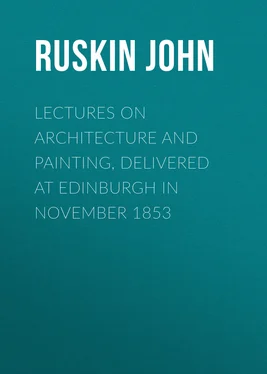

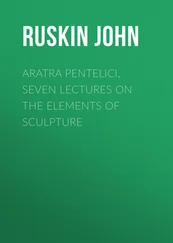

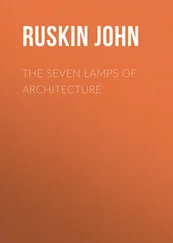
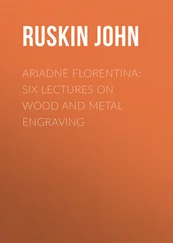


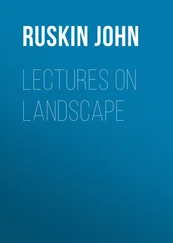

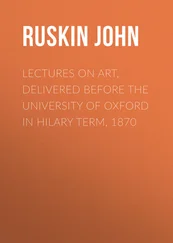
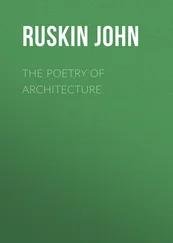
![John Bruce - The Lettsomian Lectures on Diseases and Disorders of the Heart and Arteries in Middle and Advanced Life [1900-1901]](/books/749387/john-bruce-the-lettsomian-lectures-on-diseases-and-disorders-of-the-heart-and-arteries-in-middle-and-advanced-life-1900-1901-thumb.webp)